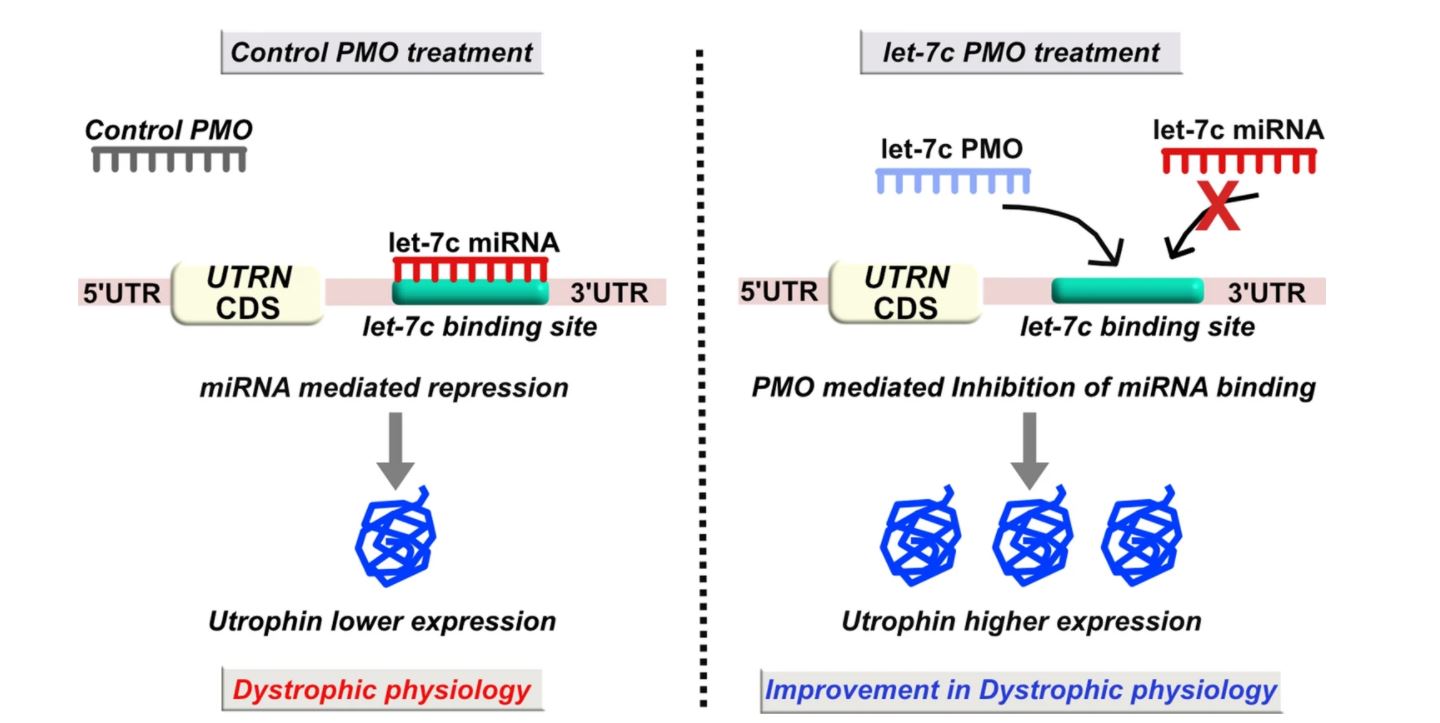Synthetic oligonucleotides blocking natural degradation of utrophin to treat muscular dystrophy.
Problem:
Duchenne Muscular Dystrophy (DMD) is a severe form of muscular dystrophy affecting males. A genetic mutation causes decreased production of dystrophin, a critical protein connecting cells to surrounding tissue. This leads to improper muscle development and muscle loss. Patients suffer from motor and respiratory impairment, and many people afflicted with DMD do not survive beyond their 20s. One strategy to treat DMD is to increase utrophin, a protein with similar structure and function to dystrophin. However, current strategies to artificially upregulate utrophin have not progressed clinically, because they fail to prevent the natural degradation of utrophin mRNA following transcription.
Solution:
The solution is a set of synthetic site-blocking oligonucleotides (SBO) which inhibits natural degradation of utrophin mRNA. These SBOs block downregulation of utrophin, increasing its expression in muscle cells which alleviates DMD symptoms. The invention works by binding to a site in utrophin mRNA which is usually targeted for degradation. Utrophin-upregulating SBOs may be used in combination with other upregulation strategies to further increase cellular expression of therapeutic utrophin.
To increase production of therapeutic utrophin in muscle cells, a set of five SBOs ranging from 24-29 base pairs were synthesized. All SBOs target the same utrophin mRNA 3’-UTR region. The SBOs increase utrophin expression by hybridizing to the Let-7c microRNA binding site. This prevents Let-7c microRNA from binding to utrophin mRNA and facilitating degradation through the RNA-induced silencing complex. Utrophin-upregulating SBOs are created using a nucleic acid mimic known as a phosphorodiamidate morpholino oligonucleotide (PMO) to decrease undesirable toxicity and increase tissue accumulation.
Advantages:
- Higher binding affinity and tissue concentration compared to other oligo alternatives
- Endogenous utrophin signal increases by 1.5-fold for 48 hours in vitro
- Two-fold higher utrophin protein expression in skeletal muscles in DMD mouse model

Schematic representation of the PMO-based SBO strategy to alleviate repression of utrophin gene. The left panel shows Let-7c miRNA mediated repression of utrophin in control PMO treated mice. The right panel shows PMO mediated blocking of Let-7c miRNA binding to utrophin 3′UTR, resulting in higher utrophin expression and improvement in dystrophic pathophysiology.
Stage of Development:
Preclinical Discovery
Case ID:
21-9570-tpNCS
Web Published:
5/12/2023
Patent Information:
| App Type |
Country |
Serial No. |
Patent No. |
File Date |
Issued Date |
Expire Date |